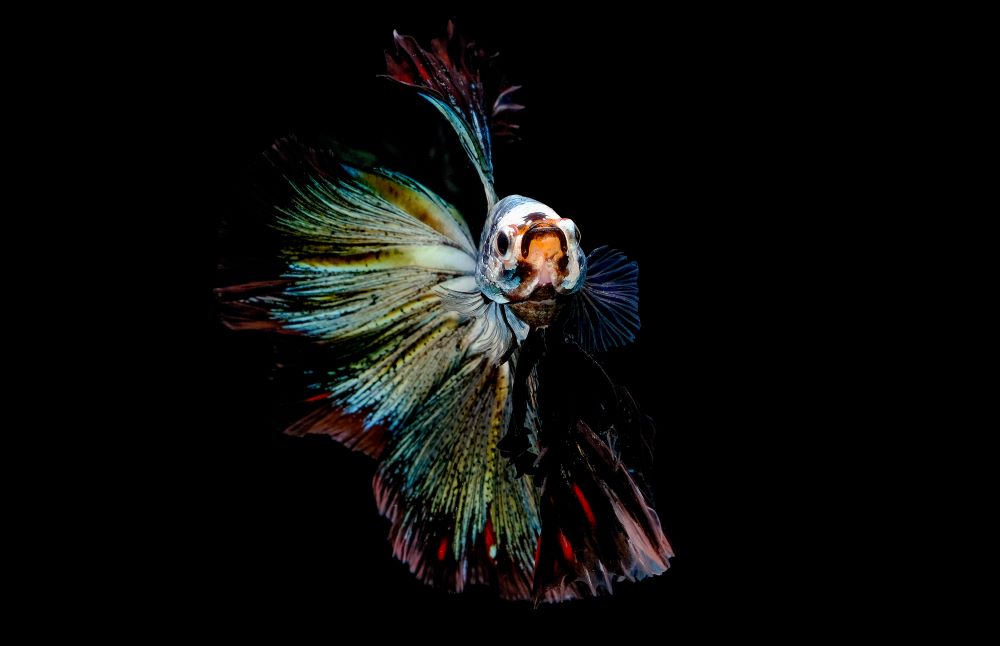Fun Fact: Did you know that a betta fish does not become pregnant in the traditional sense? Instead, it becomes ‘gravid,’ which means being heavy—with unfertilized eggs. Now that we have that bit straight, let’s talk about gravid betta.
As a betta fish enthusiast, I understand that discovering signs of egg-laddenness in yours can be exciting and daunting. After all, your little swimming beauty is in the first stage of bringing a wee fish into the world.
But just like in human pregnancies, once you get over that initial rush of excitement, you have to approach the development calmly and start acting to ensure its success.
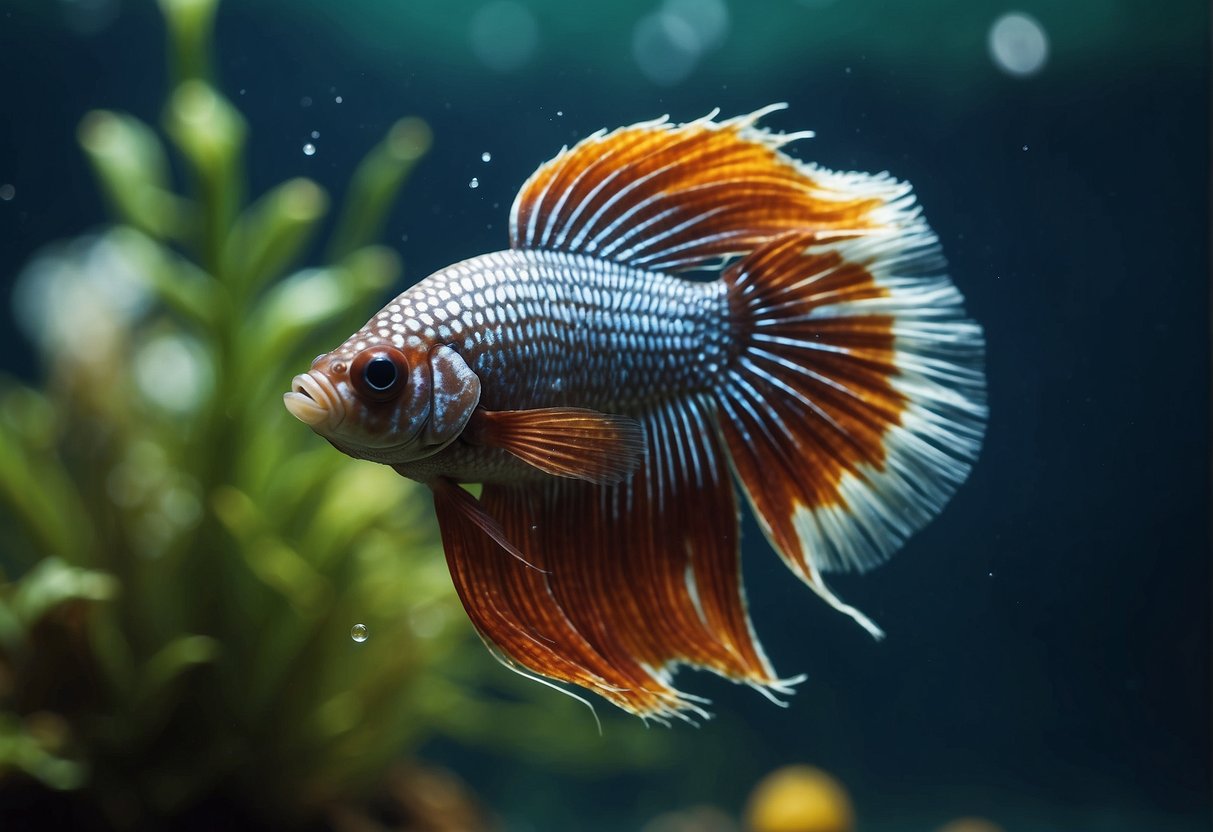
Then again, perhaps you’re new to fish-keeping and don’t know how to tell when your fish is heavy with eggs. In that case, you’ll find this comprehensive guide to betta pregnancy even more helpful.
We’ll discuss everything about betta gravidity, including how to identify it and take care of your betta afterward. We’ll also discuss betta mating, spawning, and post-breeding care.
Contents
Identifying Pregnancy
Technically, betta fish do not get “pregnant” since they lay eggs. The correct term is that the female is gravid, meaning she is full of eggs waiting to be fertilized.
Certain physical signs indicate that a female betta fish may carry unfertilized eggs, but it’s easy to misinterpret these signs, as they don’t always indicate such egg weight. For example, one of the primary signs of a pregnant betta fish is a swollen belly.
As the eggs develop, the abdomen begins to enlarge. However, your female betta fish can also become bloated due to constipation, overfeeding, or other health condition. This could generate a misleading indication of pregnancy, and your fish may need emergency medical attention. Luckily, other factors will help you be sure.
For instance, in addition to a swollen abdomen, you may notice a white discharge from the ventral area. The following table highlights the key bodily signs to look for:
| Sign | Description |
|---|---|
| Swollen Belly | A rounder and more pronounced abdomen. |
| Gravid Spot | A white or pinkish spot near the anal fin, known as the ovipositor, which is an egg-laying organ. |
| Vertical or White Stripes | Females may show vertical or white stripes on their sides during spawning readiness. |
In addition to these signs, you may also notice behavioral changes. Your betta may become more lethargic, and you may notice some aggressiveness toward tank mates as she prepares to lay her eggs.
All of these signs are generally reliable indicators that your betta is gravid when taken together. But if you’re unsure you’re identifying them correctly, you can always call your vet for assistance.
Breeding Behavior and Mating Signs
If you have identified the signs right, then your betta will be mating soon enough to fertilize those eggs. When it’s about time, they tend to exhibit specific behaviors and physical signs, which you must understand to ensure successful mating and spawning.
Betta Fish Mating Rituals
Betta mating rituals are elaborate, and it can be easy to mistake them for aggression from the male. It involves a dance: the male flares his gills, spreads his fins, and twists his body to showcase his strength and catch the female’s attention.
If the female is interested, she will eventually display vertical stripes on her body and may also flare back. This latter action is the clearest sign that she’s ready to mate.
Monitoring the pair during these rituals is crucial because the male can sometimes become too aggressive and harm the female. If the female betta fish is not showing the vertical breeding stripes but remains interested, she may still be receptive to the male’s advances.
However, signs of disinterest or stress, such as hiding or a barred stress pattern, indicate that the female is not ready. In that case, you must separate the two before some real harm results.
If the female is ready, the process carries along with the male wrapping his body around the female – a mating embrace called the “nuptial embrace” – and the female releasing her eggs.
During these moments, the male catches the eggs in his mouth before placing them into the bubble nest. The female betta can lay anywhere from 20 to 100 eggs in a single spawning event. Immediately after the female lays her eggs, the male betta releases milt into the water, fertilizing the eggs.
Bubble Nest Building by Male Betta Fish
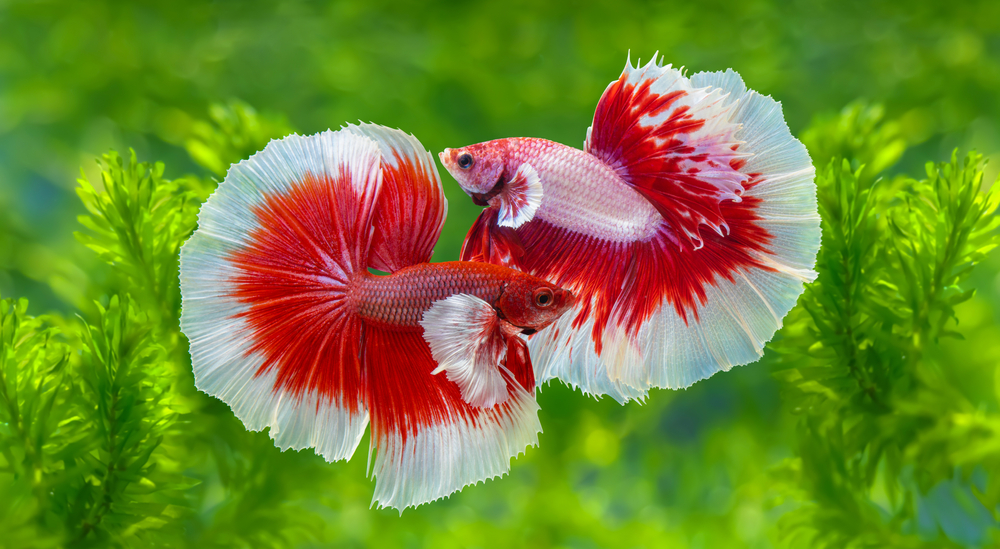
Male betta fish have pre-mating behaviors that indicate they’re ready for business; one of those is bubble nest building. The male betta constructs this nest by blowing bubbles at the water’s surface, which will hold the eggs post-spawning.
These nests can vary in size but are typically found at the water’s surface surrounded by plants or other forms of shelter. If things go as planned, the female will lay her eggs in the bubble nest.
However, a lot can go wrong with the wrong environmental conditions, and you need to ensure they are. Ideally, to promote successful bubble nest building, you should maintain the water temperature between 78 – 80°F and provide a calm environment without strong currents.
Interestingly, even after the eggs are laid and fertilized, the male remains diligent, collecting any eggs that fall and placing them back into the nest. While male bettas are undoubtedly keepers, their style of keeping can get out of hand.
The male tends to guard the nest aggressively, which is why it is often recommended to keep the male and female in separate tanks during this time to prevent the male from seeing the female as a threat to the nest.
Creating the Optimal Environment for Spawning
When preparing for the spawning of betta fish, you should prioritize three critical factors: the tank setup, good water conditions, and stable temperature regulation. These elements are essential in creating a conducive environment for bettas to spawn successfully.
Tank Requirements
Due to their territorial nature, your betta should ideally be kept in separate tanks until it’s time to breed. Then, your breeding tank should be spacious and mimic their natural habitat as much as possible. Here are some tank features to ensure.
- Size: Ensure a minimum of 5 gallons for the breeding tank to provide adequate space.
- Hiding Spots: Include floating plants or decorations to offer privacy and comfort.
- Substrate: A bare-bottom tank is often preferred for easy cleaning and maintenance.
- Water Level: Maintain a shallow depth of 5-6 inches to assist the male in caring for the eggs.
Water Conditions
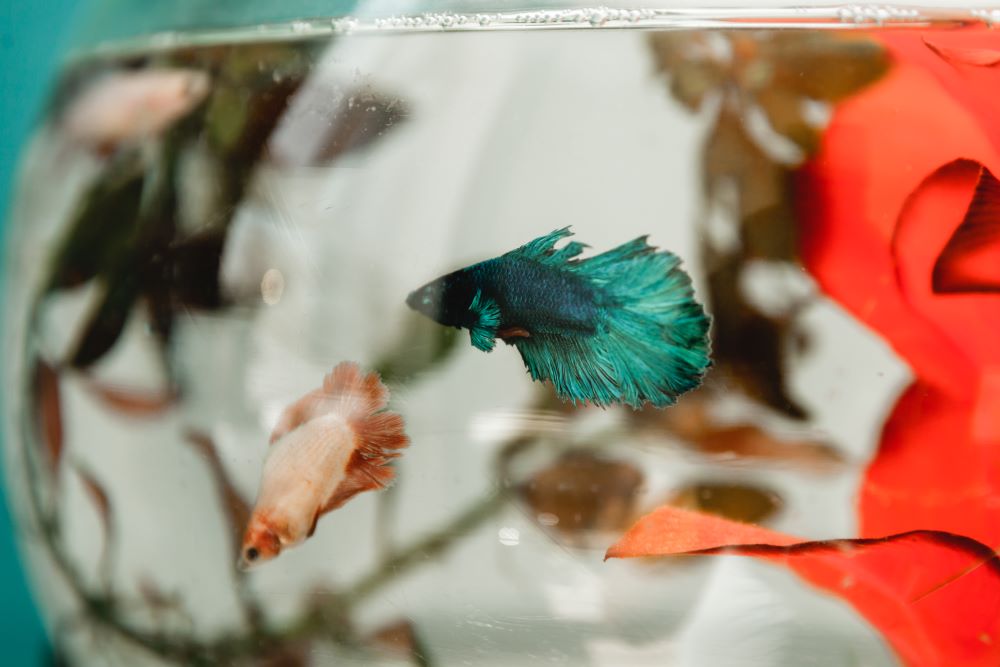
High water quality is non-negotiable for betta breeding. You should do the following to ensure the water is just right for breeding.
- Perform water changes of about 20-30% weekly to keep the environment clean.
- Use a water conditioner to remove harmful chemicals and neutralize chlorine in tap water.
Temperature Regulation
Bettas need warm water to breed, so you should maintain the temperature strictly using the following methods:
- Heater: Use a reliable aquarium heater to keep the water between 78 and 80 degrees Fahrenheit.
- Thermometer: You should always have a thermometer in the tank to monitor the water temperature continuously.
By consistently applying these standards, you can ensure that your betta fish spawn and develop in the healthiest conditions.
Caring for Betta Fry
It takes up to 48 hours for Betta eggs to hatch into fry. Once they do, it’s vital to focus on the first few weeks of life and ensure proper feeding and oxygen levels. These are crucial for the survival of fry. Now, let’s talk about how to handle these little fish in their fragile early days and subsequent growth.
First Days of Fry
During the initial days after hatching, paying close attention to the fry’s water surroundings and diet is vital. Betta fry do not require feeding right away, as they initially rely on their yolk sacs for nutrition.
However, once they start swimming freely, usually after 24 to 48 hours, you might try feeding them infusoria—a type of microscopic food suitable for their tiny mouths. At this stage, you have to keep the water temperature steady between 78-82°F. I find that performing daily water changes of 10-30% also helps keep the water clean without causing undue stress on the fry.
Growth and Development
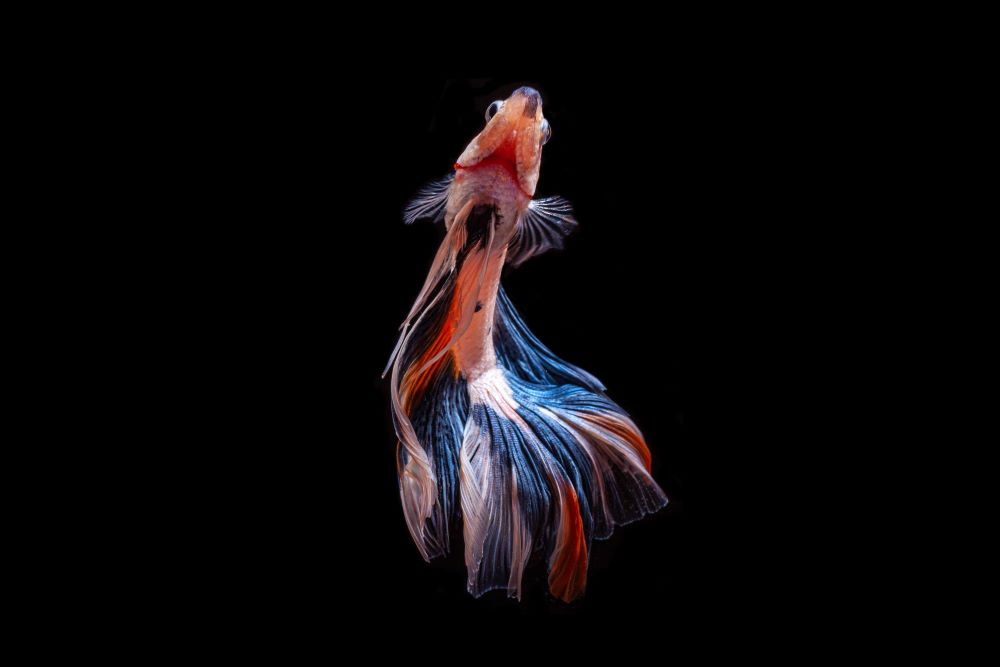
As the baby bettas grow, their dietary needs get more demanding. After about a week, they can switch to larger foods like baby brine shrimp or micron pellet food. At around eight weeks, they’ve begun to show body coloration—an indication that their development is going great so far.
Oxygen supply is very crucial at this stage because the fry are much bigger now and deplete the oxygen faster. Thus, providing consistent, gentle aeration is essential to ensure enough oxygen in the water. Avoid strong filtration at this stage to prevent the fry from being sucked in or buffeted by strong currents.
By weeks three to four, your fry is ready to transfer into a grow-out tank, which will ideally offer more space to accommodate their increased size and activity level. Proper feeding and care during these stages will lead to robust growth and minimize fatalities.
Potential Issues and Interventions
Betta fish pregnancy can come with specific risks and complications that require intervention. If you know how to identify and address these issues, you can ensure the health of both the female betta and her offspring. Let’s consider three of the most popular complications that can occur in gravid betta.
Egg-Bound Females
An egg-bound female betta is one who is unable to lay her eggs. This condition is often caused by overfeeding, poor water conditions, or lack of a suitable spawning site, and it can be fatal if you don’t notice and do something about it early enough.
Signs to look out for include a swollen abdomen and an inability to defecate. Once you notice these signs, you can help by adjusting the diet to include high-fiber foods and ensuring pristine water conditions. Occasional baths with Epsom salt can also help alleviate the issue.
Unfertilized Eggs

Occasionally, female bettas may carry unfertilized eggs. If these eggs do not go through spawning or reabsorption as they naturally should, it can lead to complications like dropsy or infection.
Regularly monitoring the female’s condition is essential here. If you suspect any problems, you may need to create a more conducive environment for egg-laying or consult a veterinarian for a check-up to preempt any health concerns.
Challenges
Predators can be a real challenge to the survival of the delicate fry. As such, you need to safeguard against predators by isolating the female during spawning and removing her after the eggs are laid to prevent cannibalism.
Disease-causing organisms are also hazardous for fry, so keep the water clean and at an appropriate temperature to minimize their presence. Be especially mindful of common ailments like dropsy and constipation. You can also ensure proper nutrition for growth and development and enhance the survival rate of the fry by feeding them live or specially formulated foods.
Post-Breeding Care for Adult Bettas
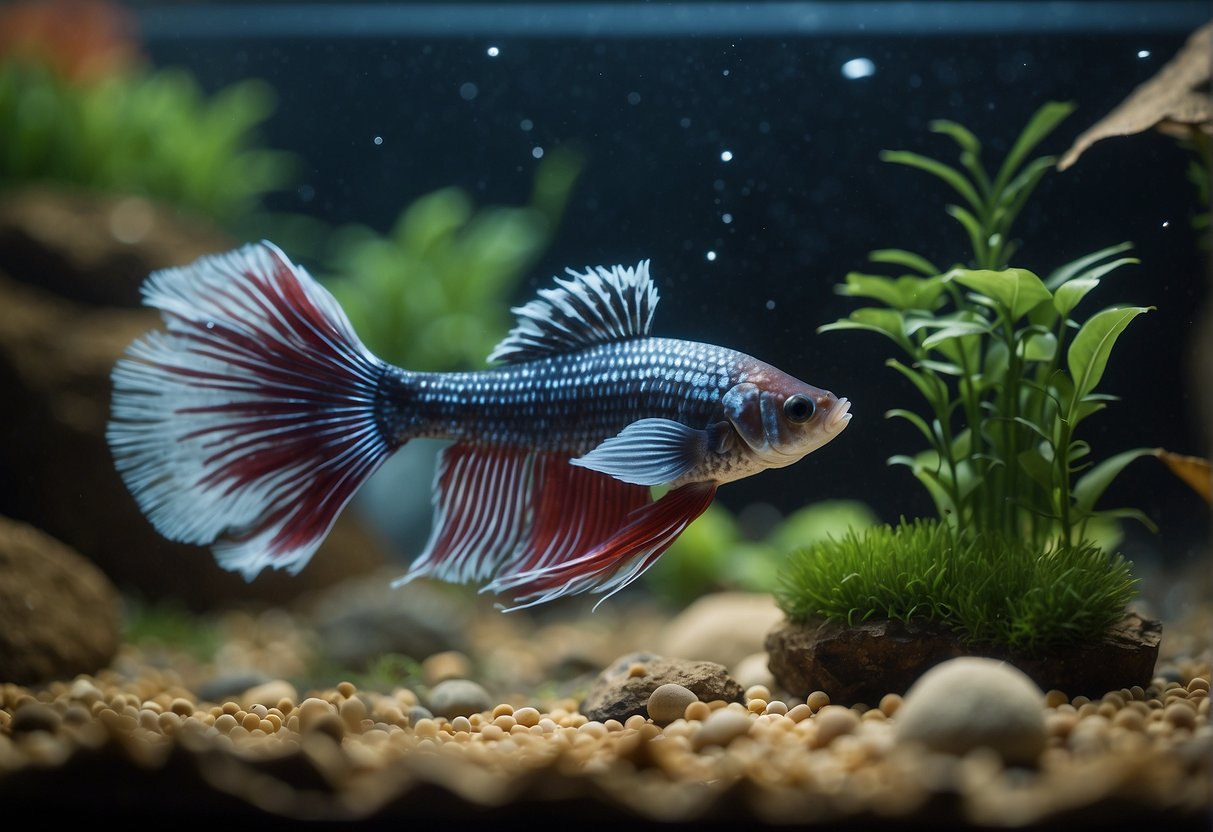
After breeding, you still have to pay close attention to the adult bettas to ensure they regain strength and maintain good health. Here’s how you can handle post-breeding care:
Cleaning: The first step is to clean the breeding tank. Remove any waste and leftover food daily to prevent water contamination, which can be harmful to bettas. You should also make gradual water changes, about 20-25% every few days, to ensure water quality remains high without stressing the fish.
Diet: You should also keep an eye on their diet, ensuring they receive high-quality pellets or live foods. Post-breeding is stressful on their bodies, and your betta parents need plenty of nutrients to recover. You can provide this by feeding them twice a day, but in smaller quantities, to accommodate any changes in appetite.
Loss of Appetite: It is not uncommon for betta fish to experience loss of appetite after spawning. You should carefully watch for any signs of illness or stress. If the loss of appetite persists, consider adding garlic to their diet or consulting a vet for advice.
Change in Behavior: Another thing to watch out for is any behavior change that may indicate stress or health issues in your betta. For example, if you see less activity or notice bettas hiding more than usual, you should check the environment for stressors, like water temperature, and adjust as needed.
Conclusion
Caring for and ensuring all goes well with a female betta’s ‘pregnancy’ is quite a delicate task. If you do it right, you’ll have several beautiful new bettas to grace your home. You’ll surely have to find separate tanks for them at some point; after all, betta fish are quite aggressively territorial.
If you don’t do it right, things may go wrong, resulting in a doozy. Never worry, though. With this comprehensive guide walking you through everything you need to do, you will find that you handle your betta’s pregnancy and spawn like a fishkeeping pro.
Frequently Asked Questions
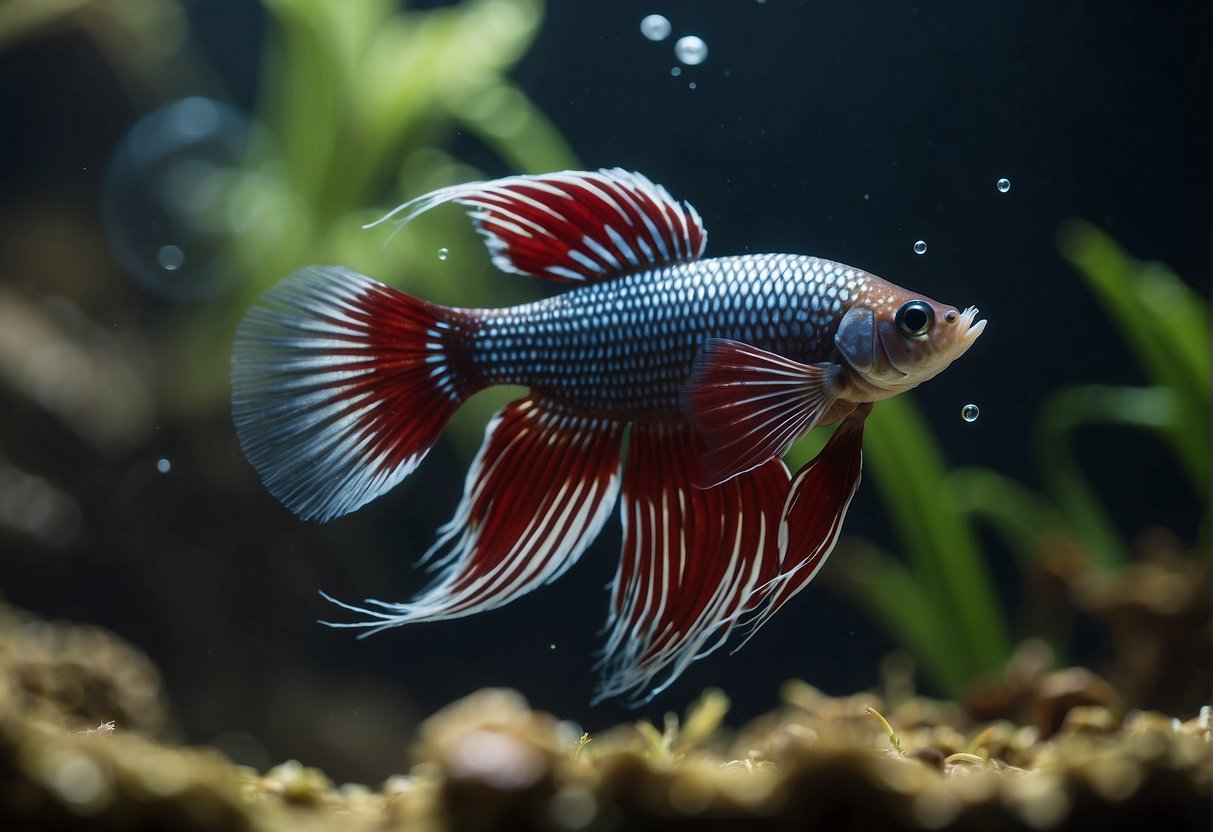
In this section, let’s answer some of the most common inquiries about pregnancy in betta fish.
How can I determine if my betta fish is carrying eggs?
To tell if your betta fish is gravid, look for signs like a bulging abdomen and the presence of a white dot near the ventral area, known as the ovipositor. If you see vertical stripes on the body, that’s another indication the betta is ready to breed.
What should I do to care for my pregnant betta fish?
Caring for a pregnant betta involves maintaining a clean tank with stable water conditions and providing a nutrient-rich diet. Slightly increase the water temperature to accommodate the needs of the gravid fish, and monitor her closely for any signs of distress.
What are the signs of a betta fish about to lay eggs?
When a betta fish is about to lay eggs, she will often appear restless and may attempt to find a suitable spot to release them. The presence of mild bulging of the belly and her staying close to the male’s bubble nest, if present, are clear signs that she is about to lay eggs.
How can I tell the difference between a bloated and a gravid betta fish?
Distinguishing between bloating and being gravid can be challenging. Bloating typically accompanies signs of distress, irregular scales, and lethargic behavior. In contrast, a gravid betta is generally active and shows no signs of disease; the swelling is smooth and consistent, centered around the midsection.
What are the appropriate steps to take once my betta fish has laid eggs?
After your betta fish has laid eggs, it’s vital to provide a quiet environment. If a male is present, he will typically take over the care of the eggs, placing them in a bubble nest. Remove the female to prevent any aggression and ensure the fry’s safety once they hatch.
How long does the gestation period last for betta fish?
The gestation period for betta fish, which is actually the time the female holds the eggs until she is ready to lay them, is typically short, often lasting 24 to 48 hours. After when the eggs are laid and fertilized, hatching can occur within 24 to 36 hours, depending on the water temperature.

Ian Sterling, founder of Fishlab.com, began his aquarium journey over 30 years ago, driven by a deep fascination for fish and their diverse personalities. His website, Fishlab.com, is dedicated to making fishkeeping accessible and enjoyable, offering beginner-friendly guidance, expert insights, and a community for aquarists to connect and share experiences.


